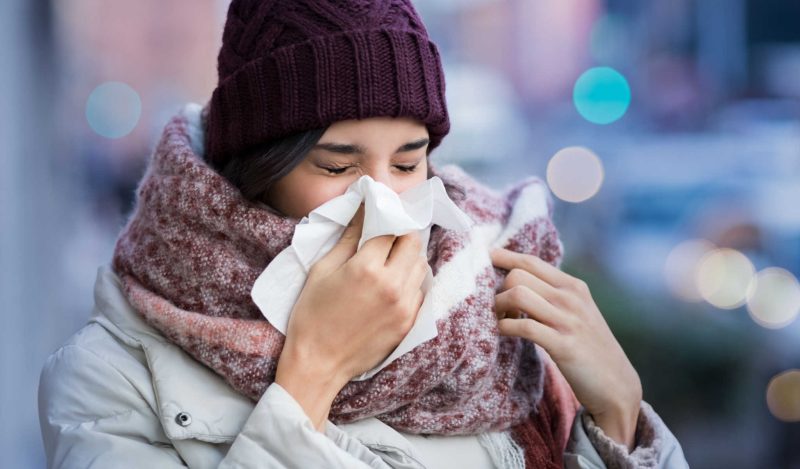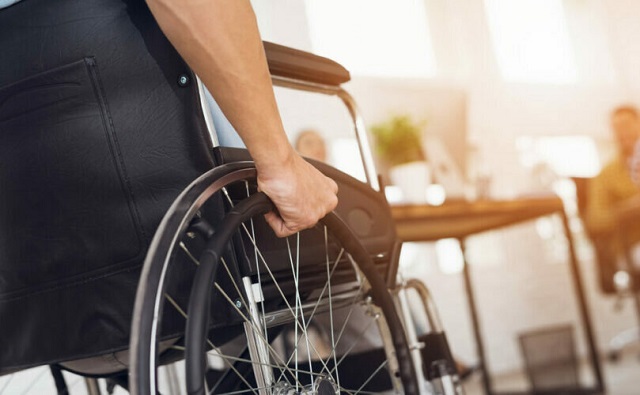COVID-19
Treat COVID-19 like the flu: new CDC guidelines

Press release from the CDC
CDC updates and simplifies respiratory virus recommendations
Recommendations are easier to follow and help protect those most at risk
CDC released today (Friday, March 1, 2024) updated recommendations for how people can protect themselves and their communities from respiratory viruses, including COVID-19. The new guidance brings a unified approach to addressing risks from a range of common respiratory viral illnesses, such as COVID-19, flu, and RSV, which can cause significant health impacts and strain on hospitals and health care workers. CDC is making updates to the recommendations now because the U.S. is seeing far fewer hospitalizations and deaths associated with COVID-19 and because we have more tools than ever to combat flu, COVID, and RSV.
“Today’s announcement reflects the progress we have made in protecting against severe illness from COVID-19,” said CDC Director Dr. Mandy Cohen. “However, we still must use the commonsense solutions we know work to protect ourselves and others from serious illness from respiratory viruses—this includes vaccination, treatment, and staying home when we get sick.”
As part of the guidance, CDC provides active recommendations on core prevention steps and strategies:
- Staying up to date with vaccination to protect people against serious illness, hospitalization, and death. This includes flu, COVID-19, and RSV if eligible.
- Practicing good hygiene by covering coughs and sneezes, washing or sanitizing hands often, and cleaning frequently touched surfaces.
- Taking steps for cleaner air, such as bringing in more fresh outside air, purifying indoor air, or gathering outdoors.
When people get sick with a respiratory virus, the updated guidance recommends that they stay home and away from others. For people with COVID-19 and influenza, treatment is available and can lessen symptoms and lower the risk of severe illness. The recommendations suggest returning to normal activities when, for at least 24 hours, symptoms are improving overall, and if a fever was present, it has been gone without use of a fever-reducing medication.
Once people resume normal activities, they are encouraged to take additional prevention strategies for the next 5 days to curb disease spread, such as taking more steps for cleaner air, enhancing hygiene practices, wearing a well-fitting mask, keeping a distance from others, and/or getting tested for respiratory viruses. Enhanced precautions are especially important to protect those most at risk for severe illness, including those over 65 and people with weakened immune systems. CDC’s updated guidance reflects how the circumstances around COVID-19 in particular have changed. While it remains a threat, today it is far less likely to cause severe illness because of widespread immunity and improved tools to prevent and treat the disease. Importantly, states and countries that have already adjusted recommended isolation times have not seen increased hospitalizations or deaths related to COVID-19.
While every respiratory virus does not act the same, adopting a unified approach to limiting disease spread makes recommendations easier to follow and thus more likely to be adopted and does not rely on individuals to test for illness, a practice that data indicates is uneven.
“The bottom line is that when people follow these actionable recommendations to avoid getting sick, and to protect themselves and others if they do get sick, it will help limit the spread of respiratory viruses, and that will mean fewer people who experience severe illness,” National Center for Immunization and Respiratory Diseases Director Dr. Demetre Daskalakis said. “That includes taking enhanced precautions that can help protect people who are at higher risk for getting seriously ill.”
The updated guidance also includes specific sections with additional considerations for people who are at higher risk of severe illness from respiratory viruses, including people who are immunocompromised, people with disabilities, people who are or were recently pregnant, young children, and older adults. Respiratory viruses remain a public health threat. CDC will continue to focus efforts on ensuring the public has the information and tools to lower their risk or respiratory illness by protecting themselves, families, and communities.
This updated guidance is intended for community settings. There are no changes to respiratory virus guidance for healthcare settings.
COVID-19
Former COVID coordinator Deborah Birx now admits jabs could have injured ‘thousands’

Deborah Birx, coronavirus response coordinator for the White House Coronavirus Task Force
From LifeSiteNews
Deborah Birx, who in 2022 admitted to ‘overplaying’ the controversial COVID jabs, now says she supports a ‘9/11-like commission’ to rebuild trust in public health authorities.
One of the top architects of the establishment response to COVID-19 now admits “thousands” of Americans could have been harmed by the controversial COVID shots, while continuing to insist their net impact was positive after hundreds of thousands of reports of jab injuries.
Dr. Deborah Birx, White House Coronavirus Response Coordinator under the Trump administration, appeared Wednesday on NewsNation, where host Chris Cuomo asked her about AstraZeneca’s recent decision to have its COVID jab (which was used in Europe but not in the United States) pulled worldwide. The company insisted the decision was for business reasons, but it shortly followed a wave of lawsuits from families claiming to have been injured by the shot, as well as a court ruling linking it to serious blood clotting.
READ: Israeli boy featured in COVID vaccine campaign dies of heart attack at age 8
Birx insisted that the COVID vaccines were “very effective” at preventing severe COVID cases, hospitalizations, and deaths, despite widespread evidence to the contrary, but acknowledged some adverse effects and legitimate questions as to forcing jabs on lower-risk groups.
“That happens often with immunizations that if the natural disease can cause it, then it also sometimes can be seen in certain profiles of the vaccine,” she said. “We should be studying that right now.” She doubted the number was in the “millions,” but said, “could it be thousands? Yes.” More than 1,600,000 reports of adverse effects from COVID jabs have been submitted to the federal Vaccine Adverse Event Reporting System (VAERS), which has been found to underreport vaccine injuries.
“I’ve called for over and over… a 9/11-like commission where all of this is laid out,” Birx added. “When we talk about rebuilding trust in science and data and information, it starts with transparency […] Until we’ve listened to each and every one of them and addressed their concerns, and they believe they were heard, people are going to continue to spread conspiracy theories.”
READ: 33-year-old father dies of immune disorder linked to Pfizer COVID vaccine, doctors say
A significant body of evidence links serious risks to the COVID shots, which were developed and reviewed in a fraction of the time vaccines usually take under former President Donald Trump’s Operation Warp Speed initiative. Among it, VAERS reports 37,544 deaths, 216,213 hospitalizations, 21,668 heart attacks, and 28,366 myocarditis and pericarditis cases as of April 26, among other ailments. U.S. Centers for Disease Control & Prevention (CDC) researchers have recognized a “high verification rate of reports of myocarditis to VAERS after mRNA-based COVID-19 vaccination,” leading to the conclusion that “under-reporting is more likely” than overreporting.
An analysis of 99 million people across eight countries published February in the journal Vaccine–the largest analysis to date–“observed significantly higher risks of myocarditis following the first, second and third doses” of mRNA-based COVID vaccines, as well as signs of increased risk of “pericarditis, Guillain-Barré syndrome, and cerebral venous sinus thrombosis,” and other “potential safety signals that require further investigation.”
Last month, the CDC was forced to release by court order 780,000 previously undisclosed reports of serious adverse reactions, and a study out of Japan found “statistically significant increases” in cancer deaths after third doses of mRNA-based COVID-19 vaccines, and offered several theories for a causal link.
READ: Canadian father files $35 million lawsuit against Pfizer over son’s jab-related death
In Florida, a grand jury impaneled by Republican Gov. Ron DeSantis is currently investigating the manufacture and rollout of the COVID vaccines. In February, it released its first interim report on the underlying justification for Operation Warp Speed, which determined that lockdowns did more harm than good, that masks were ineffective at stopping COVID transmission, that COVID was “statistically almost harmless” to children and most adults, and that it is “highly likely” that COVID hospitalization numbers were inflated. The grand jury’s report on the vaccines themselves is highly anticipated.
As for Birx, she was a crucial part of the effort to convince Trump to support widespread lockdowns in 2020, and admitted two years later to using what she called “strategic sleight-of-hand” and “subterfuge” to shift the White House’s more limited original COVID guidance to more draconian measures. Birx also admitted in 2022 that “we overplayed the vaccines” when she “knew these vaccines were not going to protect against” getting infected.
COVID-19
The New York Times Admits Injuries from COVID-19 Shots

From Heartland Daily News
By AnneMarie Schieber
“This is a promising start, but what about the dead?”
The COVID-19 shots have caused multiple, serious injuries, an article in The New York Times acknowledged on May 4.
It is the first time the self-described newspaper of record has reported on the severe side effects from the vaccines, since the massive inoculation campaign that went into full swing starting in January 2021. The article profiled several health professionals with advanced degrees who suffered debilitating injuries ranging from neurological disorders, shingles, hearing loss, tinnitus, Guillain-Barre Syndrome, and racing hearts, weeks and months after their COVID-19 shots.
‘I’m Told I’m Not Real’
The patients, all familiar with the internal workings of the health care system, described their utter frustration with their complaints not being taken seriously.
“I can’t get the government to help me,” Shaun Barcavage, a 54-year-old nurse practitioner from New York City told the Times. Barcavage now suffers from tinnitus after suffering from stinging in his eyes, mouth, and genitals upon getting his first COVID shot. “I’m told I’m not real. I’m told I’m coincidence.”
Similarly, Gregory Poland, editor-in-chief of the journal Vaccine, found little interest in his condition, according to the Times. Poland has urged his contacts at the Centers for Disease Control to examine the connection between the shots and tinnitus, which has afflicted him.
“I just don’t get any sense of movement,” Poland told the Times. “If they have done studies, those studies should be published.”
Changing Times?
The 3,244-word article—which the Times says was the result of months of investigation—highlights reports of COVID shot injuries reported by patients, conservative media outlets, and courageous doctors almost immediately after the vaccine campaign got underway, but were dismissed by the Times and other mainstream media outlets.
“That it took The New York Times more than three years to report on COVID side effects is just the latest indictment against our corrupt corporate legacy media,” said Jim Lakely, vice president and communications director at The Heartland Institute, which publishes Health Care News. “Back when such reporting would have been just as true, and actually mattered, the likes of The New York Times characterized all talk of negative side effects of a rushed COVID treatment as ‘disinformation’ and unproven ‘conspiracy theories.’”
Traditionally, journalism’s role was to remain neutral and to be skeptical of power, but the pandemic proved that corporate media outlets can no longer be trusted to report the news, and the article is the Times’ attempt to rehabilitate its image, says Lakely.
“The same legacy media that led the charge to de-platform and shame any free-thinking American who dared to question government narratives and mandates during the pandemic does not get points, for now, starting to gently report what has been true since the spring of 2020,” Lakely said.
Never Mind Deaths
“This is a promising start, but what about the dead?” wrote Jeff Childers on May 4 in his Coffee and COVID Substack. Childers has meticulously documented the “sudden deaths” of young, healthy people who received the COVID shots.
“Never mind!” wrote Childers. “Here we find the first serious gap in the article’s coverage. The Times avoided this difficult issue, only briefly referring to possible deaths. But maybe it was too much to expect in this cautious, tentative first step toward officially acknowledging that ‘Houston, we may have a problem.’”
Sudden deaths began getting serious attention late in 2022 after insurance executives started noticing a rise in death claims of young, working-age people. Pilots, whose health is closely monitored, oddly began dying mid-flight.
Also missing from the article is any mention of Peter McCullough, M.D., who has become one of the most recognizable names around the globe warning people about the mRNA shots. “No, I was not contacted,” McCullough told Health Care News.
‘Politics At Play’
Childers says the timing of the Times article is suspicious, noting that former CNN anchor Chris Cuomo, who championed pandemic mitigation measures, went on national television recently to discuss his COVID shot injuries.
“I’m speculating, a lot, but cynically I sense politics at play,” wrote Childers. “We’re six months out from the election. Who does admitting even partial failure of the vaccine program help, politically, and who does it hurt? The acknowledgment of the reality of widespread, unaddressed vaccine injuries would seem to hurt President Trump the most.”
AnneMarie Schieber ([email protected]) is the managing editor of Health Care News.
-

 COVID-192 days ago
COVID-192 days agoKenyan doctor: WHO pandemic treaty aims to ‘maim and kill’ and ‘establish a one-world government’
-

 Brownstone Institute18 hours ago
Brownstone Institute18 hours agoMedical Elites’ Disgrace Over Ivermectin
-

 conflict10 hours ago
conflict10 hours ago‘It Makes No Sense’: Experts Puzzled By Biden Admin’s Claim That Rafah Invasion Wouldn’t Help Israel Defeat Hamas
-

 Automotive2 days ago
Automotive2 days agoElectric vehicle mandates mean misery all around
-

 Bruce Dowbiggin1 day ago
Bruce Dowbiggin1 day agoGetting Real About Justin’s Real Estate Economy. It Won’t Last
-

 Bruce Dowbiggin7 hours ago
Bruce Dowbiggin7 hours agoWhy Do The Same Few Always Get The Best Sports Scoops?
-

 Opinion18 hours ago
Opinion18 hours agoThe American Experiment Has Gone Down In Flames
-

 Energy6 hours ago
Energy6 hours agoBuckle Up for Summer Blackouts: Wind Is Already Failing Texas in Spring







